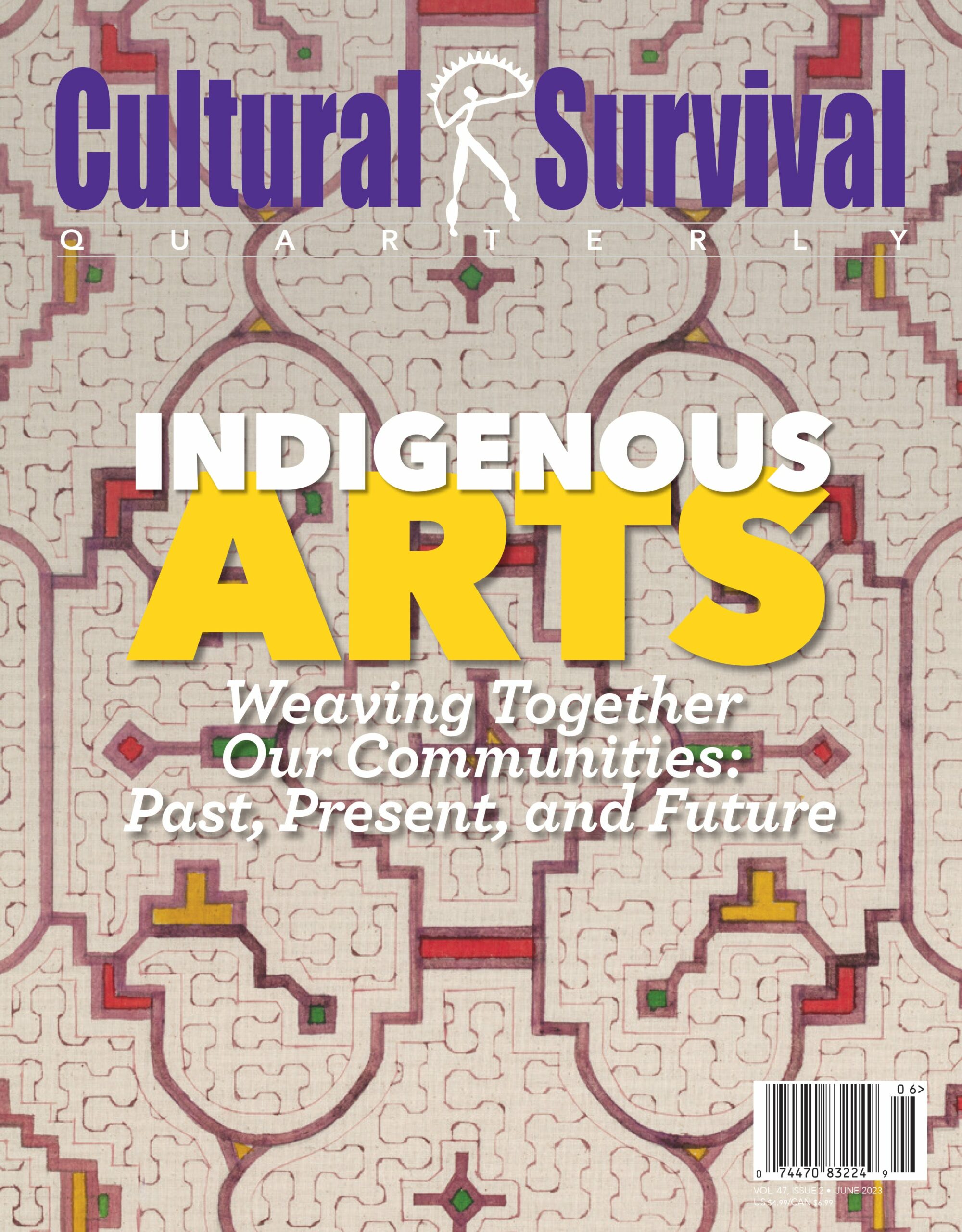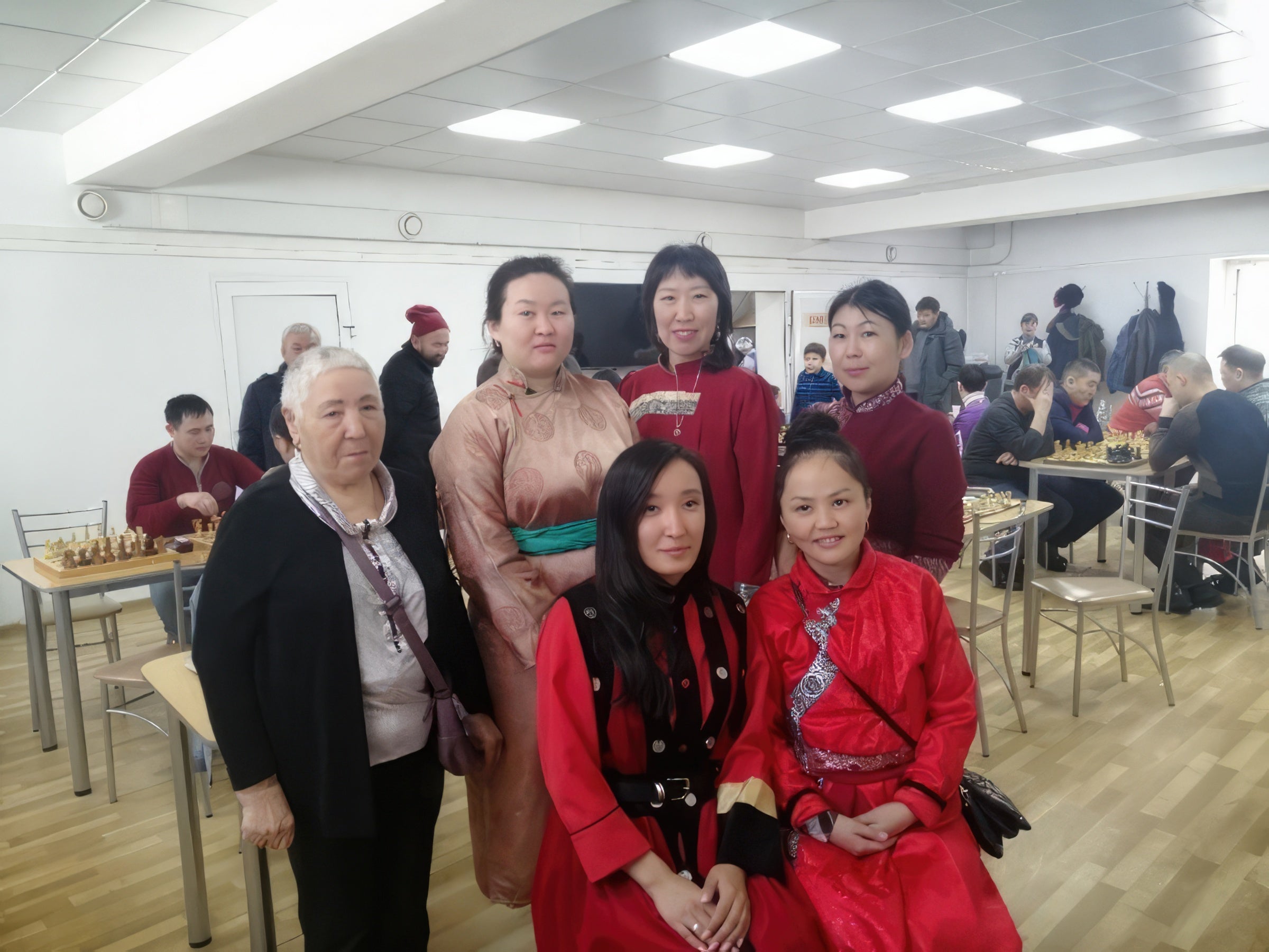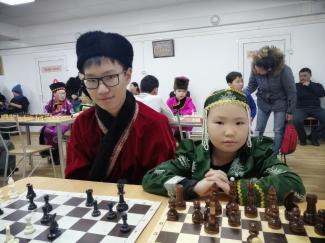Strengthening Buryat Pride Through Shatar
 15 Juni 2023
15 Juni 2023
agnes
Thu, 06/15/2023 – 19:40
Buryats are one of the most numerous Indigenous Peoples living around Lake Baikal in Siberia. Traditionally, they were nomadic cattle breeders and semi-nomadic herders with seasonal movements between permanent winter and summer settlements. Buryats in the Predbaikalia region, which is on the western side of Lake Baikal, have kept shamanism as their main spiritual practice, while Buryats in Transbaikalia, on the eastern side of Lake Baikal, adopted Buddhism in the 19th century. On both sides of the lake some Buryats practice a form of syncretism that combines elements of both traditions.
The western side of Baikal is the Irkutsk Oblast. According to WorldGEO, Indigenous Buryats constitute 3.3 percent, or approximately 80,000, of the total population of 2.4 million. Prior to 2008, the Ust-Orda Okrug (county) existed as an autonomous entity. In 2008, it was absorbed by the Irkutsk Oblast, a region now predominantly inhabited by Russians. Since then, it has retained only a few features of cultural autonomy. Representation of Indigenous Buryat people is extremely limited in public spaces.
One of the ways Buryat cultural autonomy and continuity is maintained is through the organization of cultural and sports festivals dedicated to the celebration of Sagaalgan, a Buryat holiday associated with the beginning of the New Year according to the lunar calendar, and Sur-Kharban, an ancient Buryat sports festival celebrated after spring field work. During Sagaalgan, there are national sports competitions in wrestling, archery, shagai (a game that uses goat or sheep bones instead of dice), and shatar (Buryat chess). Sur-Kharban is an event that brings together all athletes living in the region. Some of its sporting events include soccer, volleyball, table tennis, checkers, chess, and Buryat national sports of horse racing, wrestling, archery, shatar, and shagai.
 Youth attend a master class and a shatar tournament in Novonukutsk, Russia.
Youth attend a master class and a shatar tournament in Novonukutsk, Russia.
During Soviet times, the celebration of Sur-Kharban was more of a sporting than a cultural event. It did not include the important elements such as wearing traditional dress, performing traditional songs and dance, and the traditional sports included only wrestling and horse racing. Shatar and archery were introduced into the tournament competitions of Sur-Kharban in the early 2000s, and shagai was introduced about a decade later. In archery and shagai, participants are required to wear Buryat traditional clothing. There is no such requirement for shatar tournaments, but participants have been increasingly wearing traditional attire at the events. It is also becoming more popular to wear traditional clothing on Buryat holidays and at various other national sporting events. In recent years, there has been an increase in interest by youth in European chess; the number of participants in regional competitions has increased by 10 percent annually. However, among national sports, shatar currently occupies an undeservedly small place: there are no shatar clubs or classes in Irkutsk region. Shatar tournaments only occur within the annual celebration of Sur-Kharban and Altargana, a holiday that is celebrated biennially.
The Shatar 38 Project is seizing on this growth in popularity as an opportunity to teach young people to play shatar, as well as to attract new players to this sport. Funded by the Keepers of the Earth Fund (KOEF), Shatar 38 aims to fill the existing cultural gap by promoting Buryat culture through the popularization of the Buryat game. To promote shatar as a tool for intercultural dialogue, Shatar 38 organizes regional tournaments and holds master classes on shatar in chess clubs in the city of Irkutsk during Sur-Khurban and at the Erdyn games. So far, about 500 people have directly participated in the project, and an additional 4,000 people will be informed about the project and shatar through social media, websites, and social networks.
Maria Kuklina, head coordinator of the Shatar 38 Project, works as a chess coach at the Irkutsk National Research Technical University where she has been promoting shatar since 2019. Every year, the University hosts open city championships in shatar where most of the participants have been Buryat students who attend the school. With support of a KOEF grant, Shatar 38 has expanded the reach of the game. So far in 2023, three tournaments and five master classes have been held in Irkutsk and the Nukut district. Project participants also plan to hold master classes in chess clubs in the region and organize a large regional shatar tournament in June. The master classes also serve as space to teach people about Buryat cultural connections to shatar, the history of the game, and how the sport fostered friendship between Peoples. In addition, Shatar 38 is developing a mobile application and is promoting the game on social media using a group created in the messaging app Viber.
 Participants proudly wear their Buryat clothing at a chess tournament in a datsan in Irkutsk, Russia.
Participants proudly wear their Buryat clothing at a chess tournament in a datsan in Irkutsk, Russia.
The organizers of the shatar tournaments encourage participants to wear Buryat traditional clothing by offering a prize for the best traditional attire. Buryat traditional clothing shows the complex history of different eras and the influences of various cultures and tribes across southern Siberia and Central Asia. Traditional dress is an important marker of ethnic identification, and traditional Buryat clothing is characteristic of steppe nomadic herders. It uses sheepskin materials derived from cattle ranching and is distinguished by the cut of the upper garment, the presence of a sleeveless jacket, the finishing of the enger (a special decorative feature on men’s cloaks), and slipperlike shoes called gutals. Women traditionally covered their hair with a headdress and wore temporal and breastplate ornaments made of coral. The clothing of Predbaikalia Buryats differs from that of Transbaikalia Buryats in size, cut, material, character of sewing, and ornamentation.
Buryat communities in the territory of Predbaikalye consist of three main tribes: the Bulagat, Ekhirit, and Khongodor, who fuse their Tungus, Oirat and Turkic origins with Mongolian influence and traditions. Their traditional clothing also changed significantly under Russian influence; under Soviet and, later, Russian colonization and widespread globalization, traditional clothing has been replaced by a more urban style. However, with growing revival of Indigenous identity, traditional clothing is being reconstructed by museums and national centers for cultural heritage, including those with State support, such as the Ust-Ordyn Center of Folk Art. Modern designers are also re-interpreting the theme of traditional Buryat clothing.
The revival of religious practices in post-Soviet Buryat communities is also expressed through clothing. Original shamanic practices are being revived, along with the reconstruction of local shamanic attire. Buddhist temples often serve as cultural centers, and people visit datsans (Buddhist monasteries) wearing traditional clothes. They shop in local stores in datsans that offer traditional clothes, art, crafts, and souvenirs. Fashion design competitions are taking place at different levels including the international Buryat Altargana festival, ethno-fashion contests at Torgon Zam, the international Ethnopodium festival, and many others in Ulan-Ude, Irkutsk, Ust-Orda, and Aginsk, the main centers of the Indigenous Buryat population. Additionally, in preschools and elementary schools, teachers are educating children about the history, appearance, features, and symbols of traditional Buryat clothing while teaching children how to make it. It is also becoming more popular to make souvenir dolls dressed in traditional clothing made by children, professional artists, and craftspeople as a way to showcase Buryat culture.
In shatar, the main principles of chess are preserved, but there are some minor differences. The pawn moves only one square forward; the knight has no right to checkmate; and the queen moves vertically and horizontally, but diagonally only to the adjacent square.
Contemporary Buryats have started to wear traditional dress when attending national and religious festivals and events such as Sagalgaan, Sur-Kharban, tribal taialgans (prayers), and family events such as weddings, anniversaries, and milanguud (children’s birthday parties). The use of modern and traditional Buryat clothing continues to increase the visibility of Buryat culture, proving that it is alive and resurging despite many years of colonization and assimilation.
In 2022, the Shatar 38 Project received a grant from the Keepers of the Earth Fund, an Indigenous-led fund at Cultural Survival designed to support Indigenous Peoples’ advocacy and community development projects globally. Since 2017, we have supported 293 projects in 40 countries through small grants and technical assistance, totaling $1,496,864.
Maria Kuklina (Buryat) and Marina Dagdanova (Buryat) teach at Irkutsk National Research Technical University. Vera Kuklina (Buryat) works as a Research Professor at George Washington University. Together, they coordinate the Shatar 38 Project.
All photos courtesy of Shatar 38 Project.


